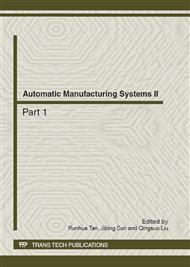p.1096
p.1100
p.1105
p.1109
p.1113
p.1120
p.1124
p.1132
p.1141
Numerical Study of Fluid Mixing in a Microchannel with a Circular Chamber on a Rotating Disk
Abstract:
This paper reports numerical simulations of fluid mixing in a rotating microchannel with a microchamber fabricated on a CD-like substrate. The sample fluids are driven by the centrifugal force and brought in contact at a Y-shaped junction, and then the mixing flow moves through a straight channel with a circular chamber where the main course of mixing takes place. The CD-like micromixer is rotated clockwise at speeds ranging from 300 to1200 rpm. With increasing rotational speed, the mixing efficiency is found dropping in the lower range (≤ 540 rpm), where the diffusion still dominates the mixing, and then grows progressively to reach as much as 90%. The progressively growth in the higher speed range significantly improves the slightly descending and flat distribution for a straight mixing channel without a circular chamber. This significant enhancement of mixing is due mainly to the vortices generated in the circular chamber and the strong transverse flow induced by the Coriolis force.
Info:
Periodical:
Pages:
1113-1119
Citation:
Online since:
June 2012
Authors:
Keywords:
Price:
Сopyright:
© 2012 Trans Tech Publications Ltd. All Rights Reserved
Share:
Citation:


